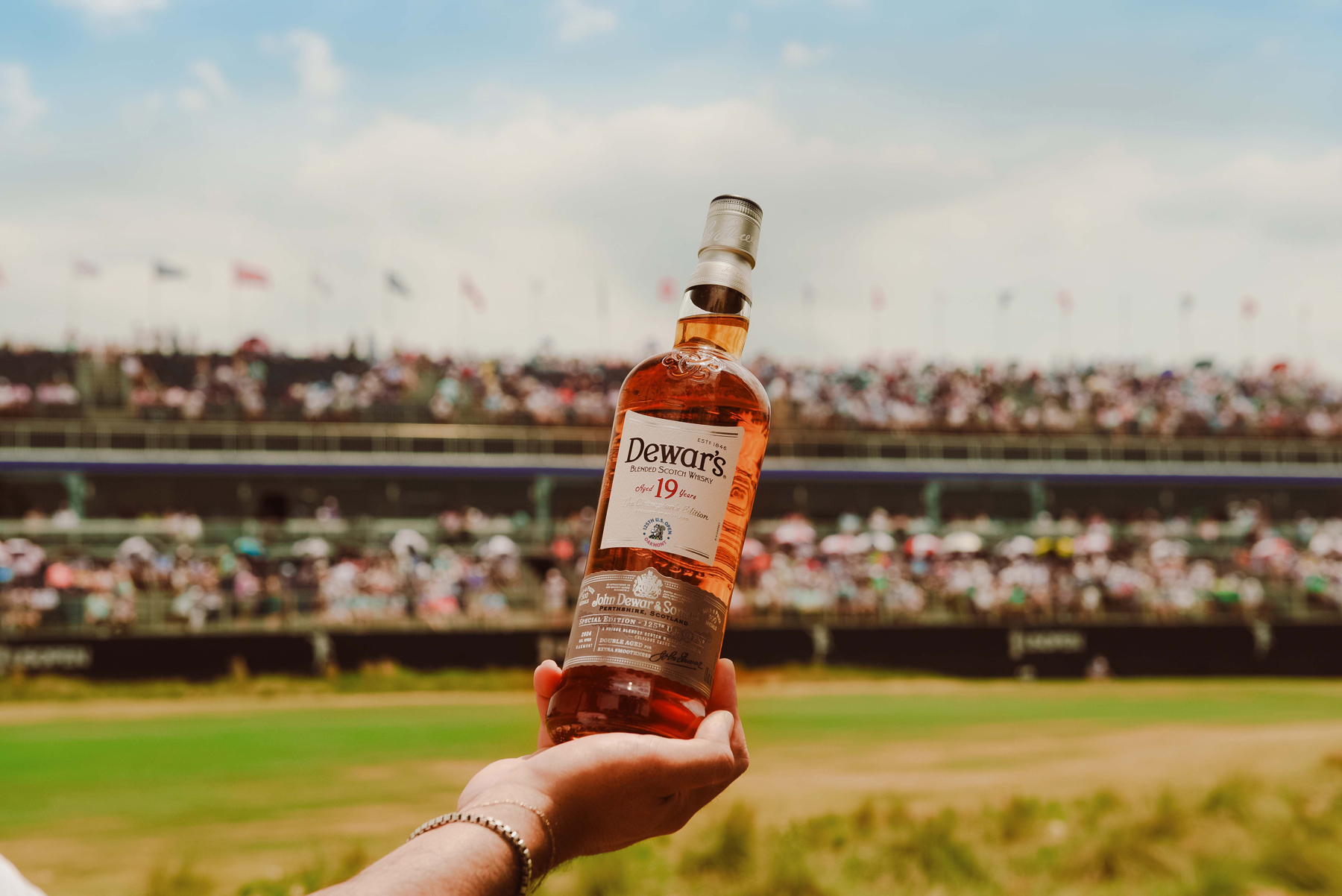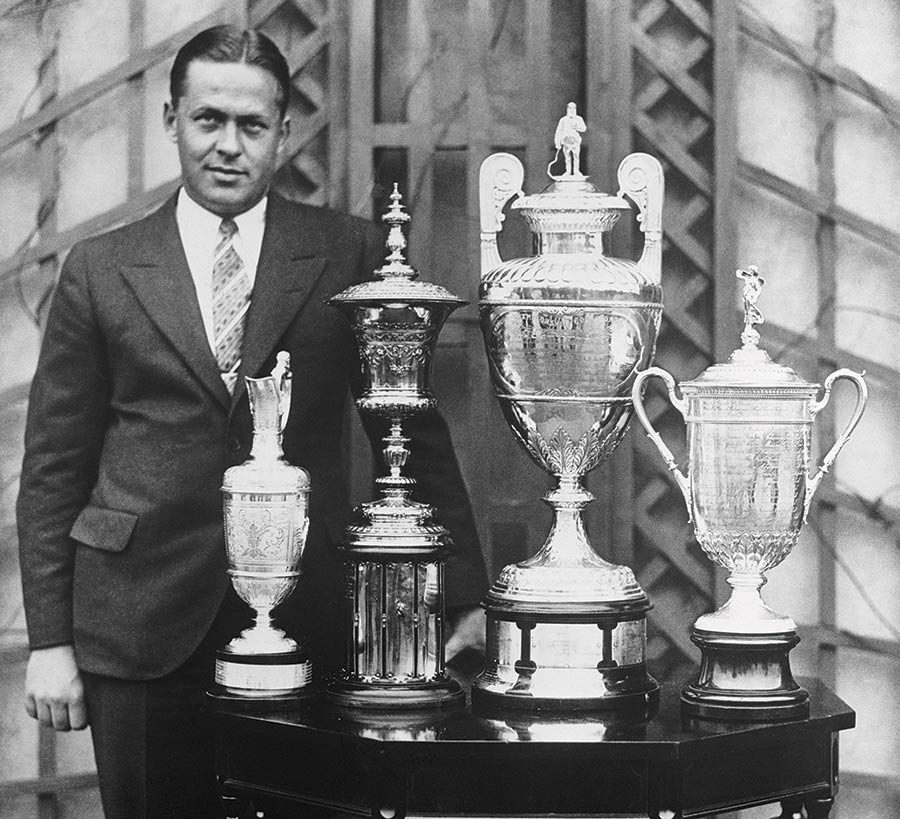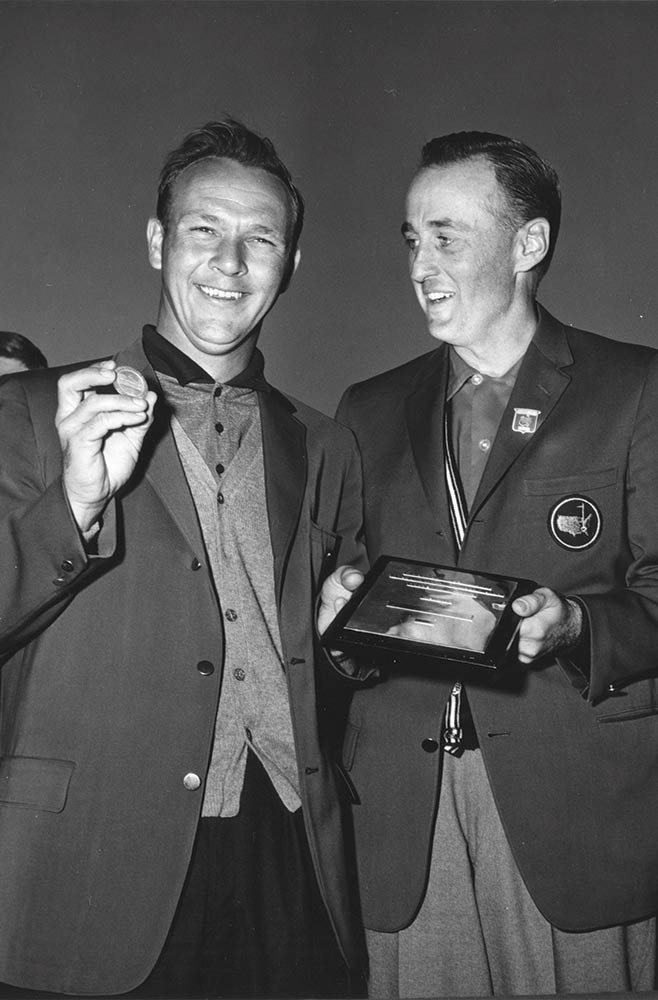
There’s no denying it, some of the best ideas are greased by vodka and caviar, or at least one idea anyway; Arnold Palmer’s vision to establish professional golf’s modern “Grand Slam”
“I was naturally drawn to the exploits of Bob Jones,” wrote Arnold Palmer in his book, “A Golfer’s Life”, in recalling his childhood hero. “I remember thinking if I could fashion a golf career along the lines of his, that would be a dream come true.”

The pinnacle of Jones’ peerless career came in 1930 when in a single season he won what became known as the “impregnable quadrilateral”, in claiming the U.S. Open, U.S. Amateur, The [British] Open and British Amateur titles.
Thirty years later, Palmer was the best golfer in the world. He won his second Masters title in that spring of 1960, followed up with an incredible late charge to win the U.S. Open at Cherry Hills, and was drawn to St Andrews that July to make his debut in The Open. He wanted to emulate Jones—three times The Open champ—but with the rapid evolution of the professional game since the end of the Second World War, Palmer saw the potential for a modern equivalent to Jones’ quadrilateral.
“I remember flying over in 1960 with my journalist friend Bob Drum from Pittsburgh,” Palmer said. “When we were drinking vodka and eating caviar on the flight we were talking about The Open and I began to philosophise. I said there was no way an amateur would ever win another major championship, let alone all four like Bobby Jones did in 1930, but it wasn’t beyond the realms of possibility that a professional could win a modern ‘Grand Slam’ made up of the Masters, the U.S. Open, the British Open and the PGA Championship. Eventually Bob came round to my way of thinking and the idea was born.”

The idea resonated with golf’s media and governors alike. The R&A was delighted to have Palmer in The Open field for the first time—particularly in 1960, marking its centenary—and The Open’s organizers were doubly pleased when Palmer’s presence saw gate receipts from the previous year nearly double. Like the profile of golf’s oldest major championship, profits soared.
Palmer could not quite claim the third corner of his Grand Slam at the Home of Golf in 1960, finishing, agonizingly, just a shot shy of Australian champion Kel Nagle, but a new precedent had been set and when he returned to British shores in 1961 Palmer recalled, “The Open and I had some unfinished business”. He lifted the Claret Jug at Royal Birkdale and successfully defended his title at Troon in 1962.
Palmer could not complete his career Grand Slam, try as he might. The PGA Championship would remain elusive, but since 1960 there has been no doubting which quartet of tournaments remain pre-eminent in professional golf.
Follow Us On


| Cookie | Duration | Description |
|---|---|---|
| cookielawinfo-checkbox-analytics | 11 months | This cookie is set by GDPR Cookie Consent plugin. The cookie is used to store the user consent for the cookies in the category "Analytics". |
| cookielawinfo-checkbox-functional | 11 months | The cookie is set by GDPR cookie consent to record the user consent for the cookies in the category "Functional". |
| cookielawinfo-checkbox-necessary | 11 months | This cookie is set by GDPR Cookie Consent plugin. The cookies is used to store the user consent for the cookies in the category "Necessary". |
| cookielawinfo-checkbox-others | 11 months | This cookie is set by GDPR Cookie Consent plugin. The cookie is used to store the user consent for the cookies in the category "Other. |
| cookielawinfo-checkbox-performance | 11 months | This cookie is set by GDPR Cookie Consent plugin. The cookie is used to store the user consent for the cookies in the category "Performance". |
| viewed_cookie_policy | 11 months | The cookie is set by the GDPR Cookie Consent plugin and is used to store whether or not user has consented to the use of cookies. It does not store any personal data. |